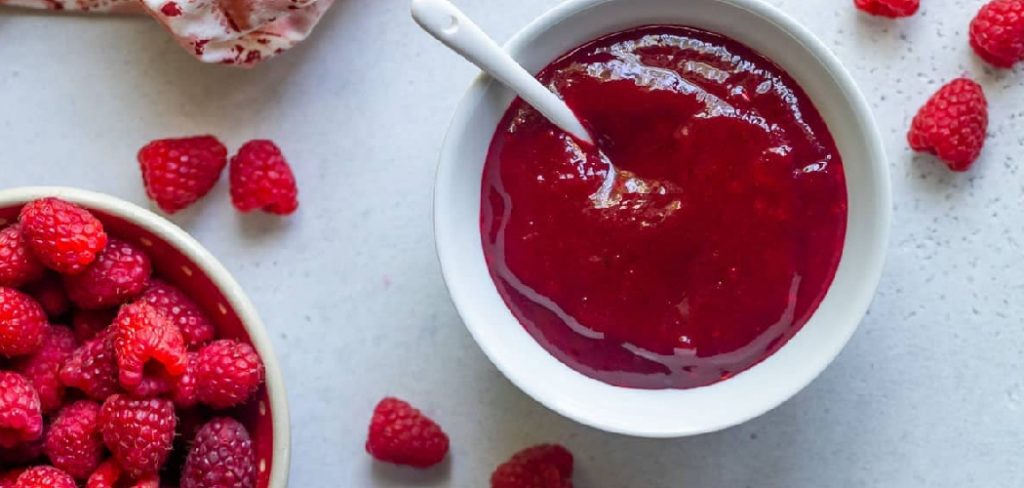Raspberries are a delicate and delicious fruit that require proper care to maintain their freshness and flavor. Whether you’re enjoying them as a snack, adding them to desserts, or using them in recipes, knowing how to clean and store raspberries correctly is essential. Improper handling can lead to rapid spoilage, mold, or loss of their vibrant taste.
With just a few simple steps, you can ensure your raspberries remain fresh and ready to enjoy.

Why is It Important to Clean Raspberries?
Raspberries, like most fruits and vegetables, can harbor bacteria, dirt, and pests. Washing your berries before consuming them removes any potential contaminants that may be present on the surface.
Additionally, some raspberry varieties may have a natural waxy coating, which can make them feel slimy or gritty. Cleaning them not only removes this residue but also enhances their taste and texture.
Needed Materials
Raspberries
Select ripe raspberries that are bright red and plump with no signs of mold or discoloration. Avoid any soft, mushy, or bruised berries as they will spoil faster.
Colander
A colander is a must-have for washing and draining raspberries. Choose one with small holes to prevent the berries from falling through.
Large Bowl
A large bowl is needed to submerge the raspberries in water and gently agitate them.
Paper Towels
Paper towels are essential for drying the raspberries after washing them. They should be clean and absorbent to avoid leaving any residue on the fruit.
8 Step-by-step Guides on How to Clean and Store Raspberries
Step 1: Sort the Raspberries
Begin by carefully sorting through your raspberries. Remove any that are moldy, overly soft, or discolored, as these can spoil the rest if stored together. Discard any berries with visible damage or an unpleasant smell. Sorting ensures that only the freshest raspberries proceed to the next steps, helping to maintain their quality and extend their shelf life.
You can also remove any large debris or stems that may be present.
Step 2: Prepare the Colander and Bowl

Place your colander in the sink to prepare it for washing the raspberries. Next, fill a large bowl with cool, clean water. The cool water helps clean the raspberries gently without causing them to become soggy or damaged.
Ensure the bowl is large enough to allow the berries to be fully submerged and moved around easily. Having both the colander and bowl ready will make the washing process more efficient and thorough.
Step 3: Rinse the Raspberries
Gently place the raspberries in the colander and run them under cold water. Use your hands to gently swirl them around, ensuring all sides come into contact with the water. This will remove any dirt, debris, or bugs that may be present.
Avoid using detergents or soap as these can leave a residue on the berries and affect their taste.
Step 4: Submerge the Raspberries
After rinsing, transfer the raspberries from the colander to the bowl of cool water. Gently move them around with your hands to ensure they are fully submerged.
This step is essential for removing any remaining dirt or debris and thoroughly cleaning the berries.
Step 5: Swirl and Drain
Using your hands, gently swirl the raspberries in the bowl for about 30 seconds. This will help dislodge any remaining dirt or pests.
Next, lift the colander from the sink and pour out the dirty water. Place the colander back in the sink and transfer the raspberries into it to drain.
Step 6: Rinse Again

After draining the raspberries in the colander, rinse them once more under cold running water. This final rinse ensures that any residual dirt or debris loosened during the swirling process is completely washed away.
Be sure to move the raspberries around gently with your hands to avoid bruising or crushing them. Once rinsed thoroughly, allow the water to fully drain from the colander before proceeding to the next step.
Step 7: Dry the Raspberries
Lay out a few layers of paper towels on a flat surface. Carefully transfer the raspberries from the colander onto the paper towels.
Using another layer of paper towels, pat the berries dry gently. Avoid rubbing or squeezing them as this can cause damage and shorten their lifespan.
Step 8: Store in an Airtight Container
After drying, place your raspberries in an airtight container lined with paper towels. The paper towels will help absorb any excess moisture and keep the berries fresh longer.
Store the container in the refrigerator’s produce drawer for up to five days. If you plan to store them for more extended periods, consider freezing them instead.
Following these steps on how to clean and store raspberries will ensure your raspberries remain clean, fresh and ready to enjoy.
Do You Need to Use Professionals?

While cleaning and storing raspberries is a straightforward process that can be managed at home, there may be rare situations where professional help is beneficial. For example, if you purchase raspberries in bulk for a business or special event, professional produce services can assist with proper cleaning, sorting, and even packaging.
These services are equipped to handle large quantities efficiently while adhering to food safety standards. However, for everyday use, following the simple steps outlined above is more than sufficient to keep your raspberries fresh and ready to enjoy.
Storing Options for Raspberries
Refrigerator
The best way to store washed raspberries is in the refrigerator. They should be placed in an airtight container or a Ziploc bag lined with paper towels to absorb any excess moisture.
Freezer
If you have a surplus of raspberries or want to save them for future use, consider freezing them. Spread the washed and dried berries in a single layer on a baking sheet lined with parchment paper. Place the baking sheet in the freezer until the raspberries are completely frozen, usually taking about an hour. Once frozen, transfer them to an airtight container or Ziploc bag and label them with the date. Frozen raspberries can last up to 12 months if stored properly.
Tips for Storing Raspberries
- Do not wash raspberries until you’re ready to eat or use them. Washing too far in advance can cause rapid spoilage.
- Avoid storing raspberries near strong-smelling foods as they can absorb odors easily.
- If you notice any moldy berries while storing, remove them immediately to prevent further contamination.
- Raspberries can also be frozen for longer storage. Place them on a baking sheet in the freezer for an hour before transferring them to an airtight container or bag. This will prevent them from freezing together and make it easier to take out individual portions when needed.
- When using frozen raspberries, there is no need to defrost them beforehand. Simply add them directly to your recipe or thaw them briefly in the microwave if eating as a snack.
- You can also use frozen raspberries to make delicious smoothies, sauces, and jams.
- Lastly, enjoy your raspberries within a few days of purchase for the best flavor and texture.
With proper cleaning and storage techniques, you can enjoy fresh, delicious raspberries for longer periods. Whether consuming them as a healthy snack or using them in various recipes, taking the time to clean and store your berries correctly will ensure they stay at their best.
Frequently Asked Questions
Q1: Can I Wash Raspberries With Vinegar?
A: It’s not necessary to use vinegar when washing raspberries. The gentle agitation and cool water are sufficient for cleaning them. The use of vinegar may also leave a residual taste on the berries.
Q2: How Can I Tell If My Raspberries Are Spoiled?
A: Moldy or discolored raspberries should be discarded immediately. You can also check for any off smells, as this can be an indication of spoilage.
Q3: Can I Store Raspberries at Room Temperature?

A: It’s best to store raspberries in the refrigerator to extend their shelf life. However, if you plan to consume them within one day, they can be left at room temperature. Keep in mind that they will spoil faster when not refrigerated.
Q4: Why Do Some Raspberries Have a Gray Film on Them?
A: This gray film is known as “bloom” and is a natural occurrence in raspberries. It’s a sign of freshness and can help protect the berries from moisture loss and spoilage. If the bloom is rubbed off, it does not affect the quality of the raspberry.
Conclusion
Learning how to properly clean and store raspberries is crucial for maintaining their freshness and taste. By following these simple steps on how to clean and store raspberries, you can ensure your berries remain free of contaminants, mold, and spoilage, making them safe and enjoyable to eat. With proper care and storage, your raspberries can last for up to a week in the refrigerator or several months in the freezer.
So next time you go berry picking or buy a carton of raspberries from the store, be sure to use these tips to keep them clean and fresh.
Happy berry cleaning!
Professional Focus
Angela Ervin, a former interior designer turned blogger, specializes in kitchen design and renovations. Through her website, she blends her passion for cooking with design expertise, sharing practical and creative ideas. Known for balancing functionality and beauty, Angela’s insightful content has made her a trusted voice in home design and lifestyle.
About the Author
Angela Ervin, an experienced interior designer and blogger, combines her passion for kitchen renovations with storytelling. Living in Petersburg with her family, she enjoys cooking and testing her projects firsthand. Known for her humor and relatable style, Angela shares creative, functional design insights through her content, making her a trusted voice in home design.
Education History
University: Virginia Commonwealth University
Degree: Bachelor of Fine Arts (BFA) in Interior Design
- Angela’s education at VCU focused on mastering core interior design principles, including spatial planning, color theory, materials selection, and sustainable design practices.
- She gained hands-on experience through studio projects and collaborative design exercises, which honed her ability to create functional and aesthetically pleasing environments.
- Her coursework also emphasized problem-solving and practical applications of design, preparing her for real-world projects like her self-directed kitchen renovations.
- The program’s strong foundation in both technical skills and creative expression shaped Angela’s ability to seamlessly integrate form and function in her work.


